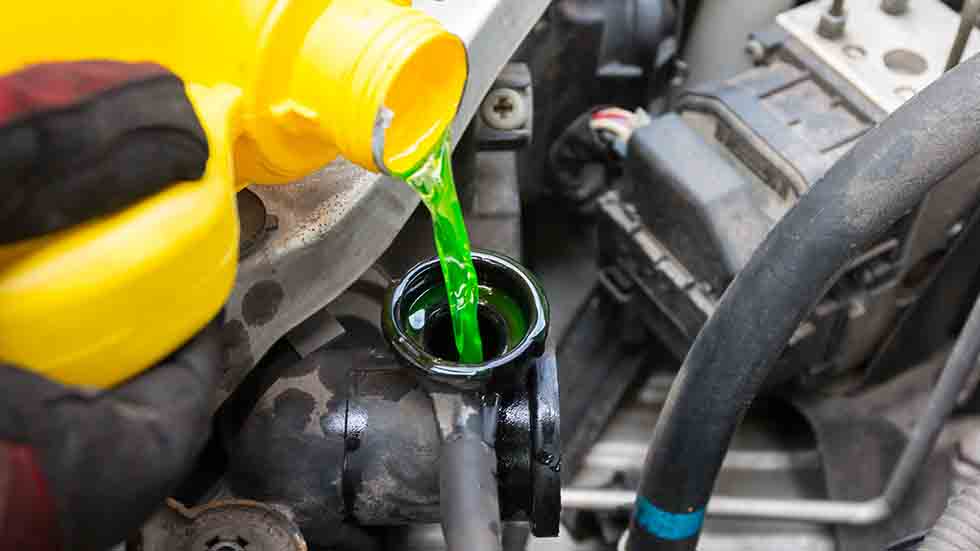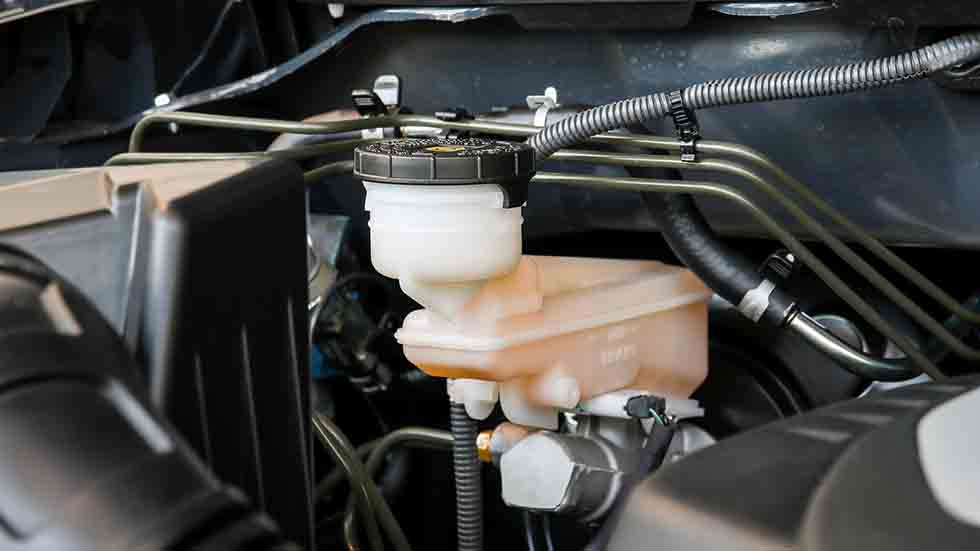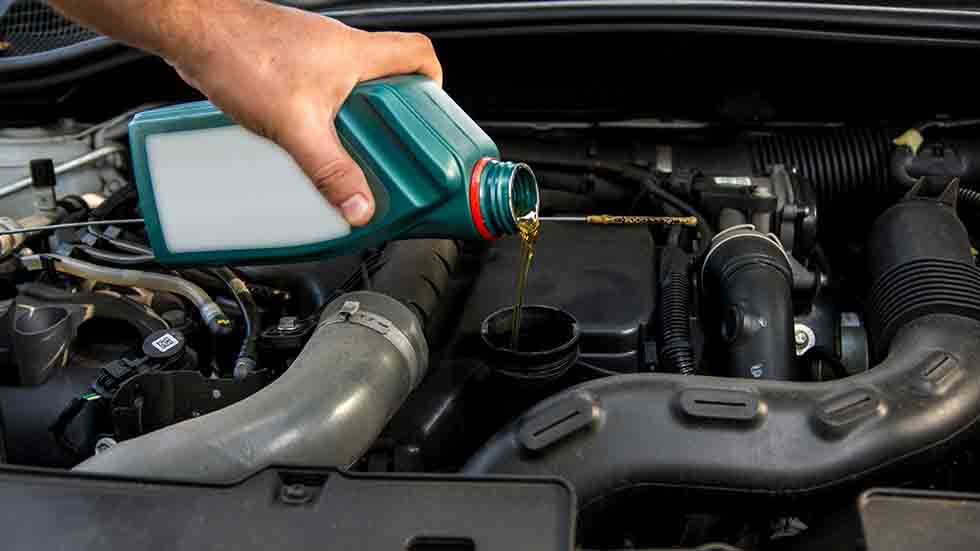Quick Tips for Checking Vehicle Fluids
Keep your car running with proper car care

Vehicle fluids require attention more often than the 5,000- to 10,000-mile service intervals common today. Incorrect fluid levels can cause breakdowns or even serious damage. For proper car care, here’s how to monitor key vehicle fluid levels between auto service visits.
General tips and cautions
- Park on level ground when checking vehicle fluid levels.
- Don’t overfill—too much of a fluid may be as harmful as too little.
- Only use fluids that meet automakers’ specifications. See your owner’s manual.
- Clean around dipsticks and reservoir caps before removing them to keep out contaminants.
- If a fluid needs frequent top-ups, have the car checked out by an auto repair shop.
Engine oil
Engine oil lubricates moving parts, and also cools and cleans internal engine parts. Insufficient oil can cause major engine damage.
With the engine cold and not running, raise the hood and pull the oil dipstick out of its tube. Wipe the dipstick clean with a cloth and insert it fully back into its tube. Remove the dipstick and check that the oil level is between the upper and lower level markings. If the level is at or below the lower mark, add oil to raise the level to the upper mark. On most cars, one quart of oil will raise the level from the lower to the upper mark.
Automatic transmission fluid
Automatic transmission fluid transfers power, lubricates, and keeps seals flexible. Some cars have sealed transmissions that require special procedures to check the fluid level.
With the engine idling and the transmission at full operating temperature, set the parking brake and apply the foot brake. Cycle the shifter through each gear position for a few seconds, then put the transmission in Neutral or Park, as specified in your owner’s manual. From this point the procedure is the same as checking the engine oil level. The only difference is that distance between the upper- and lower-level markings on the dipstick is usually equivalent to one pint of fluid.

Engine coolant
Engine coolant is also known as antifreeze. It prevents engine freeze-up in winter, raises the boiling point of coolant in the summer, and protects against rust and corrosion year round.
With the engine cold and not running, raise the hood and locate the reservoir for the coolant recovery system. This is usually a translucent plastic container mounted near the radiator or on one of the inner fender panels. The reservoir will have upper (hot) and lower (cold) level markings molded into it. If the fluid level is below the lower mark, add coolant up to that point, but not any higher.

Brake fluid
Good auto service means maintaining the amount of brake fluid at a safe level. Brake fluid transmits the force that brings your car to a safe, sure stop. It also lubricates and protects the brake hydraulic components.
Raise the hood and locate the brake fluid reservoir, usually located atop the master cylinder at the rear of the engine compartment on the driver’s side. Most cars use a translucent plastic reservoir with upper and lower level markings molded into it. If the fluid level is between the two marks, no action is necessary. If the level is near, at, or below the lower mark, have an auto repair shop inspect the brake system for wear or leaks as soon as possible.

Power steering fluid
Power steering fluid transmits hydraulic pressure, and also helps protect rubber hoses and seals in the system.
If the fluid reservoir is part of the pump, remove the cap/dipstick, and wipe it clean with a cloth. Insert it fully back into the reservoir, then remove it and check that the fluid level is between the upper and lower level markings. There may be two sets of marks, one if the fluid is hot, the other if it is cold. If the level is near or below the lower mark, add enough fluid to reach the appropriate upper mark. Some cars have a remotely mounted translucent plastic power steering fluid with high and low marking molded into it. When the fluid is at operating temperature its level should be between the two markings.
Windshield washer fluid
All modern cars have translucent plastic washer fluid reservoirs. If the fluid level is low, remove the cap and fill the reservoir to the top. Use a bug-removing washer fluid in summer, and a solution with antI-freeze properties in winter if you live where temperatures drop below freezing.
